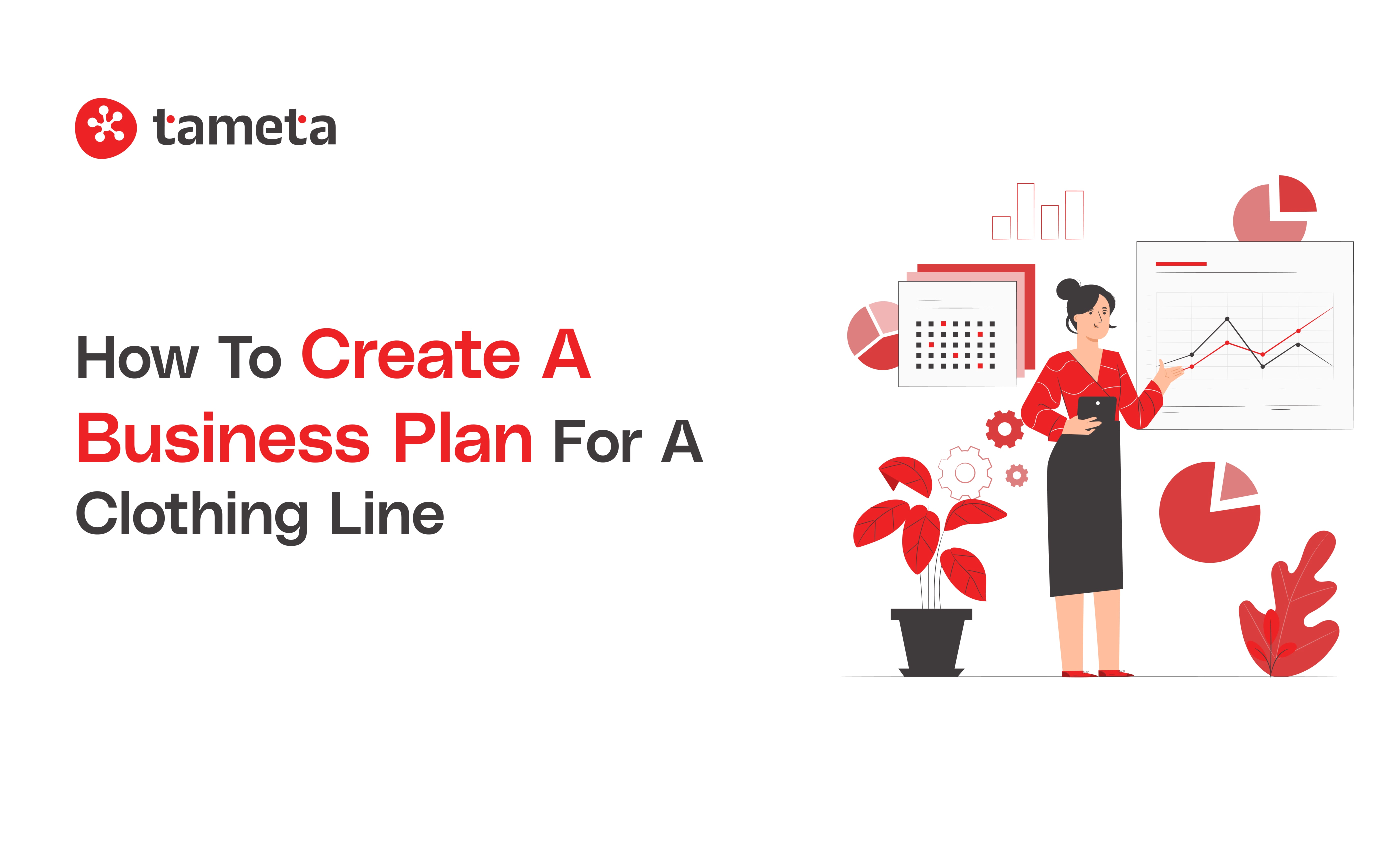Are you dreaming of launching your clothing line but don't know where to start? The secret to turning your fashion dreams into reality lies in creating a solid business plan. This guide will walk you through every step of making a winning business plan for your clothing line, helping you launch and grow your online store with confidence!
Introduction
Starting a clothing business can be exciting and rewarding, but like any business, success doesn’t happen by chance. A business plan acts like a roadmap that guides you from your idea to a thriving clothing brand. Whether you want to sell clothes on Shopify or open a physical clothing store, making a business plan is the first step.
In this article, you will learn how to create a business plan for a clothing line in easy words that anyone can understand. We'll cover everything from market research to sales strategies and even Shopify development tips to help you build your online clothing store.
Why Is Creating a Business Plan Important for Your Clothing Line?
Creating a business plan is a crucial step when starting your clothing line. It works like a detailed map that shows you how to reach your destination, a successful business. Here’s why it matters:
-
Clarity: When writing a business plan, clearly describe your clothing line, target customers, and objectives. This helps you stay focused and make smart decisions.
-
Funding: If you need money to start or grow your business, banks and investors typically require a business plan. It proves you have thought carefully about your business and increases their confidence in you.
-
Strategy: A business plan helps you plan all parts of your business, like marketing your clothes, managing production, and making sales, so you don’t miss anything important.
-
Tracking: As your business runs, you can compare your results with your plan. If something is not working, you can change your approach quickly to stay on track.
According to the Small Business Administration (SBA), businesses with a written business plan are 2.5 times more likely to succeed than those without one. This shows how important planning is!
You May Also Like to Read this Article - The Complete Guide on How to Contact Shopify Customer Support
Step-by-Step Guide: How to Create a Business Plan for a Clothing Line
1. Write an Executive Summary
The executive summary is like the introduction or summary of your entire business plan. Imagine you are telling a friend about your new clothing line — what would you say? This part answers:
-
What is your clothing brand about? (For example, casual wear for teens, sportswear, or kids’ clothing)
-
What kind of clothes will you sell?
-
Who are your target customers?
-
What are your main goals? (For example, selling 1,000 items in the first year or opening a physical store after online success)
Tip: Keep this part short, clear, and exciting because it is the first thing potential investors or partners will read.
2. Describe Your Business
This section gives basic details about your clothing business:
-
Business Name: What is your brand called?
-
Legal Structure: Are you a sole proprietor (you alone own the business), a partnership (owned by you and others), or a company like an LLC? This affects taxes and legal responsibilities.
-
Location: Will you sell online only? Or have a physical store? Or both?
-
Unique Selling Point: What makes your clothing line special? For example, do you use eco-friendly fabrics? Do you offer custom designs? Are your prices affordable?
Writing this helps you understand your own business clearly and tells others why your brand matters.
3. Conduct Market Research
Before selling your clothes, it’s important to learn about the market:
-
Who are your customers? Think about their age, gender, lifestyle, and what styles they like.
-
What do they want? What are their favourite colours, sizes, or types of clothes?
-
Who are your competitors? Are there big brands or small local shops selling similar clothes? How do they price their products?
-
What are the latest trends? Fashion changes quickly, so knowing current trends helps you stay relevant.
Note: You can use tools like Google Trends, social media, or surveys to collect this information.
The global online clothing market was valued at USD 545 billion in 2023 and is expected to grow at about 10.6% annually until 2030. This means online clothing sales are booming! (Source: Grand View Research)
4. Plan Your Products
Decide exactly what products you will offer:
-
Types of clothes: t-shirts, jackets, dresses, hats, etc.
-
Materials: cotton, polyester, organic fabrics, etc.
-
Sizes and colours: Will you offer a full size range? Which colours?
-
Pricing: Will your clothes be budget-friendly, mid-range, or luxury?
Tip: Start small with a few items to test the market, and expand your collection as you grow.
5. Create a Marketing Plan
Marketing means telling people about your clothing line and convincing them to buy.
-
Use social media platforms like Instagram, Facebook, and TikTok to show your products.
-
Collaborate with influencers who can promote your brand.
-
Run paid advertisements on Google or Facebook to reach more customers.
-
Send newsletters and email campaigns to keep your audience engaged.
-
Offer promotions, discounts, or giveaways to attract buyers.
Remember: Marketing is not one-time. You need to keep connecting with your customers regularly to build trust and loyalty.
6. Decide on Sales Channels
Figure out where you will sell your clothes:
-
Online Store: This is very popular and easier to start. Shopify is one great option to build your online store.
-
Physical Store: A real shop or boutique where customers can try and buy.
-
Pop-up Shops/Markets: Temporary stalls at events or markets.
-
Wholesale: Selling your clothes to other stores in bulk.
Note: Starting with an online store is usually cheaper and allows you to reach more customers quickly.
7. Shopify Development for Your Online Clothing Store
If you choose to sell online, Shopify is one of the easiest and most powerful platforms to build your store.

-
It has many ready-made themes designed especially for clothing stores.
-
You don’t need to know coding — it’s simple to customize.
-
It supports secure payments and mobile-friendly designs.
Tip: If you want a unique, professional look, consider hiring a Shopify development partner. They can create a store tailored to your brand and improve user experience.
8. Operations Plan
This section explains how your clothing business will work daily:
-
How will you get materials or products? (Make them yourself, order from manufacturers, or dropship?)
-
How will you manage inventory (keeping track of stock)?
-
How will you pack and ship orders?
-
How will you handle customer questions or problems?
Having a clear operations plan helps you run your business smoothly.
9. Financial Plan
This is about money how much you need, spend, and expect to earn.
-
Startup Costs: Money needed to buy materials, build your website, marketing, etc.
-
Monthly Expenses: Rent, salaries, shipping, and other bills.
-
Sales Forecast: How many clothes do you plan to sell each month?
-
Break-even Point: When will your business start making a profit (earn more than it spends)?
-
Profit and Loss: How much money will you make or lose over time?
Tip: Be honest and realistic when estimating numbers. It’s better to plan conservatively.
10. Team and Management
If you have partners or employees, describe who they are and what they do.
-
Your own experience in fashion or business.
-
Designers who create the clothes.
-
Marketing people who promote your brand.
-
Customer service staff who help buyers.
Knowing your team’s strengths helps investors trust your business.
Common Mistakes to Avoid
-
Not researching your market enough
-
Ignoring your competitors
-
Overestimating sales or underestimating costs
-
Forgetting marketing strategies
-
Not planning for challenges or risks
FAQS
1. What is a business plan, and why do I need one for my clothing line?
- A business plan is a simple document that explains your clothing business idea, how you will sell clothes, and how you will make money. It helps you stay organized and shows others (like banks or investors) that you are serious about your business.
2. Can I start a clothing business without a business plan?
- You can, but having a business plan makes your chances of success much higher. It helps you avoid mistakes and plan smartly. According to experts, businesses with plans are 2.5 times more likely to succeed!
3. How long does it take to make a business plan?
- It depends, but usually, it can take a few days to a couple of weeks. Take your time to think carefully about your customers, products, and money plans.
4. Do I have to be a business expert to write a business plan?
- No! You just need to explain your clothing business idea clearly and honestly. Use simple words and write like you are telling a story about your brand.
5. What is the best way to sell my clothes online?
- Using an online store like Shopify is a popular and easy way. Shopify helps you create a website where customers can see and buy your clothes safely.
Final Thoughts
Creating a business plan for your clothing line is like drawing the map before the journey. It shows you where to go, what to avoid, and how to reach your goals faster. Whether you're planning a clothing store business plan or an online clothing store business plan, the principles are the same.
Want to start your online clothing store? Tameta Tech can help! We build easy and beautiful Shopify stores that make selling your clothes simple. Partner with us and grow your business faster. Let’s create your dream store together today! Contact Tameta Tech, your trusted Shopify development partner.
Remember, your business plan is a living document. It will change and grow as your brand grows. Take your time, be thorough, and stay passionate about your clothing line.








